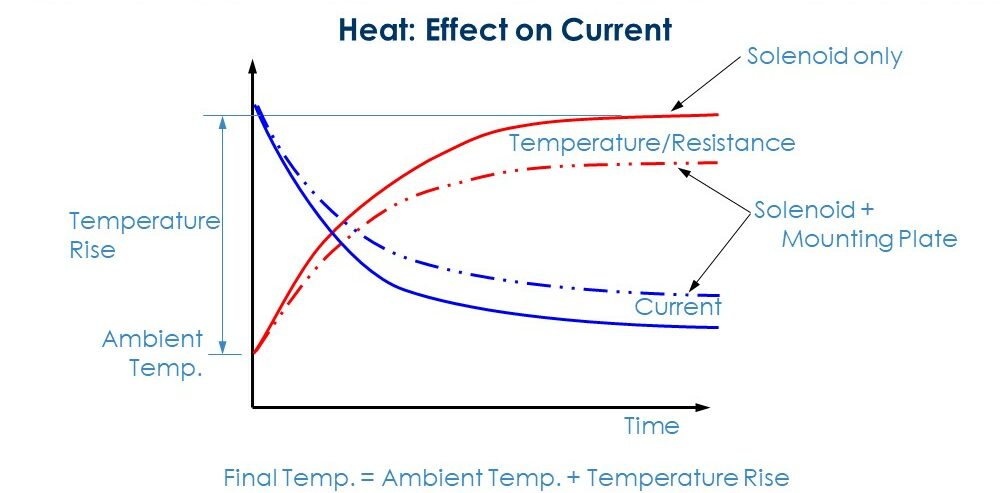Temperature Impacts on Solenoids – Part 1
Have you ever experienced the frustration of trying to use an overheated cell phone? Perhaps it wasn’t your cell phone, but rather an overheated car engine that delayed your morning commute to the office. Though these items may not have completely stopped working altogether, your ability to use them to their full potential was limited due to the temperature’s impact on them. These are real world challenges. In the world of manufacturing, specifically manufacturing electromagnetic devices, the same is true when we consider the impact of temperature on solenoids.
At Magnet-Schultz of America, we’re passionate about developing and manufacturing electromagnetic solutions for our customers’ unique application challenges. When our Program Management team begins discussions with our customers regarding their unique challenges or special projects, we ask many questions up front to ensure our team has a good, overall understanding of what the project entails and what the customer needs. Our goal is to understand the performance characteristics our customers absolutely need to ensure success and optimal performance within their dimensional and technical requirements.
Occasionally, customers are quick to want to skip through these questions and immediately get to the commercial aspects of the project, which we know are also important. However, playing with cards up and asking the right questions at the start of the project is the best way our Engineering and Program Management teams will be able to provide the best possible electromagnetic solutions for our customers’ unique applications at the lowest total cost. This also allows us to jump-start the development Advance Product Quality Planning (APQP) process which ensures successful product launches for our customers every time.
Understanding what the application is, (i.e. the purpose the system will serve), and knowing how the solenoid will function in the application is critical. A key aspect of the design which can have a huge impact on overall functionality of the solenoid are the thermal characteristics of the solenoid. Heat, though a naturally occurring by-product of applying energy to a solenoid, if not contained within the appropriate parameters, can be detrimental to the reliability and performance of any electromagnetic solution.
A solenoid is generally a device comprised of a coil of wire, a housing and a moveable plunger (armature). When an electrical current is introduced, a magnetic field forms around the coil which draws the plunger in. A solenoid essentially converts electrical energy into mechanical force. It does work!
When our Design Engineering team starts working on a new solenoid design, they must take heat dissipation into consideration. When electrical energy is applied to the coil, the coil temperature increases until thermal stabilization is achieved. Electrical energy going into the solenoid means heat energy must come out of the solenoid. This is the reason why solenoids get hot.

When the solenoid temperature rises, the current is reduced due to the change of resistance based upon the thermal coefficient of the copper wire. One manner to mitigate these adverse effects on the current and to maintain and/or provide greater performance is by adding a mounting plate or heat sink.

Higher temperatures reduce the current and therefore reduces the magnetic force the solenoid can generate as amp turns will be lower. Understanding what the ambient temperatures are of every application is critical for Magnet-Schultz and the customer to assure we design the products to perform under all expected environmental conditions.
We hope you found the information shared on this blog useful. We welcome your temperature-challenging application and look forward to discussing the electromagnetic device that’ll provide the solution you need to satisfy your customers. Contact us today to learn how we can help you with your next project.







Leave A Comment